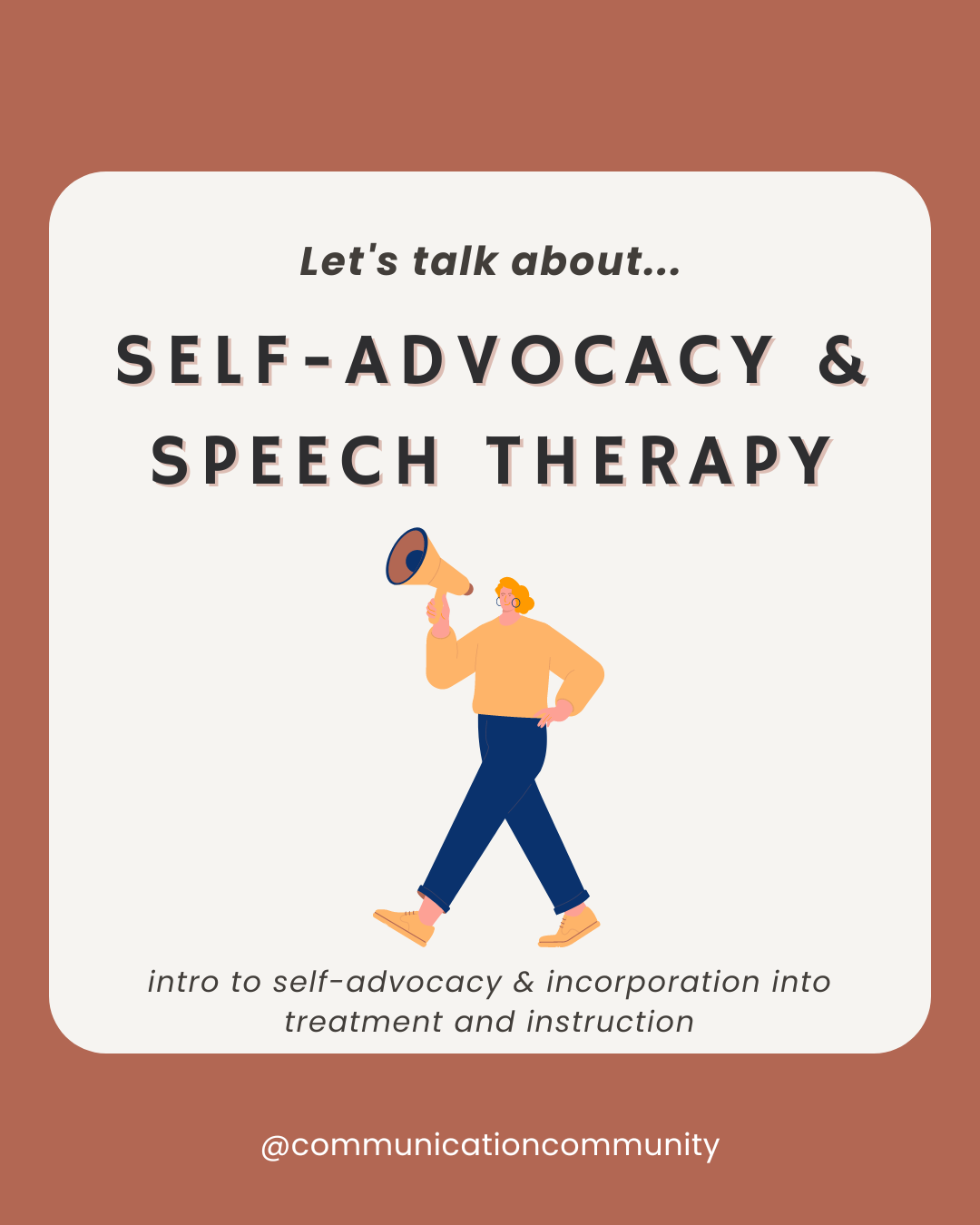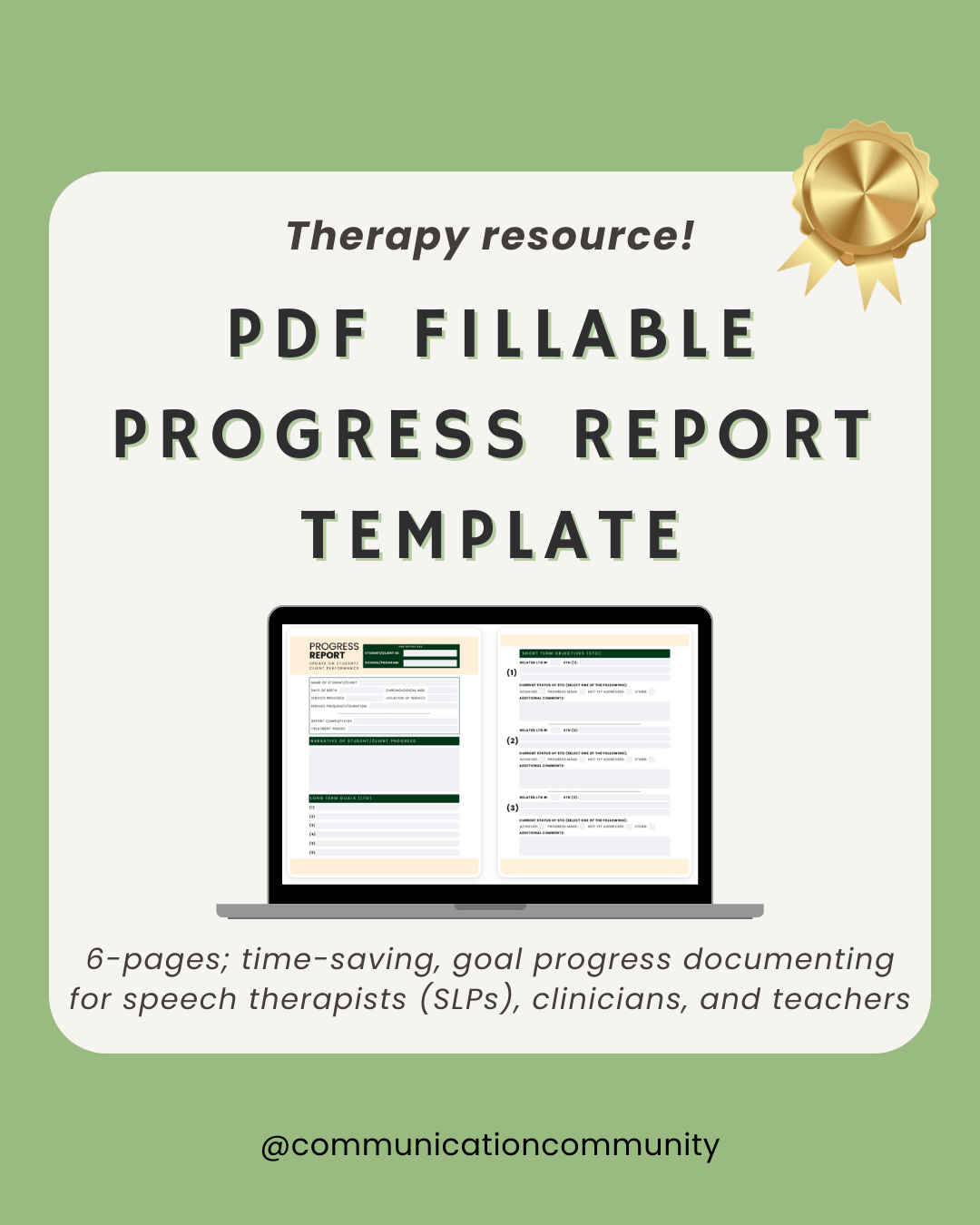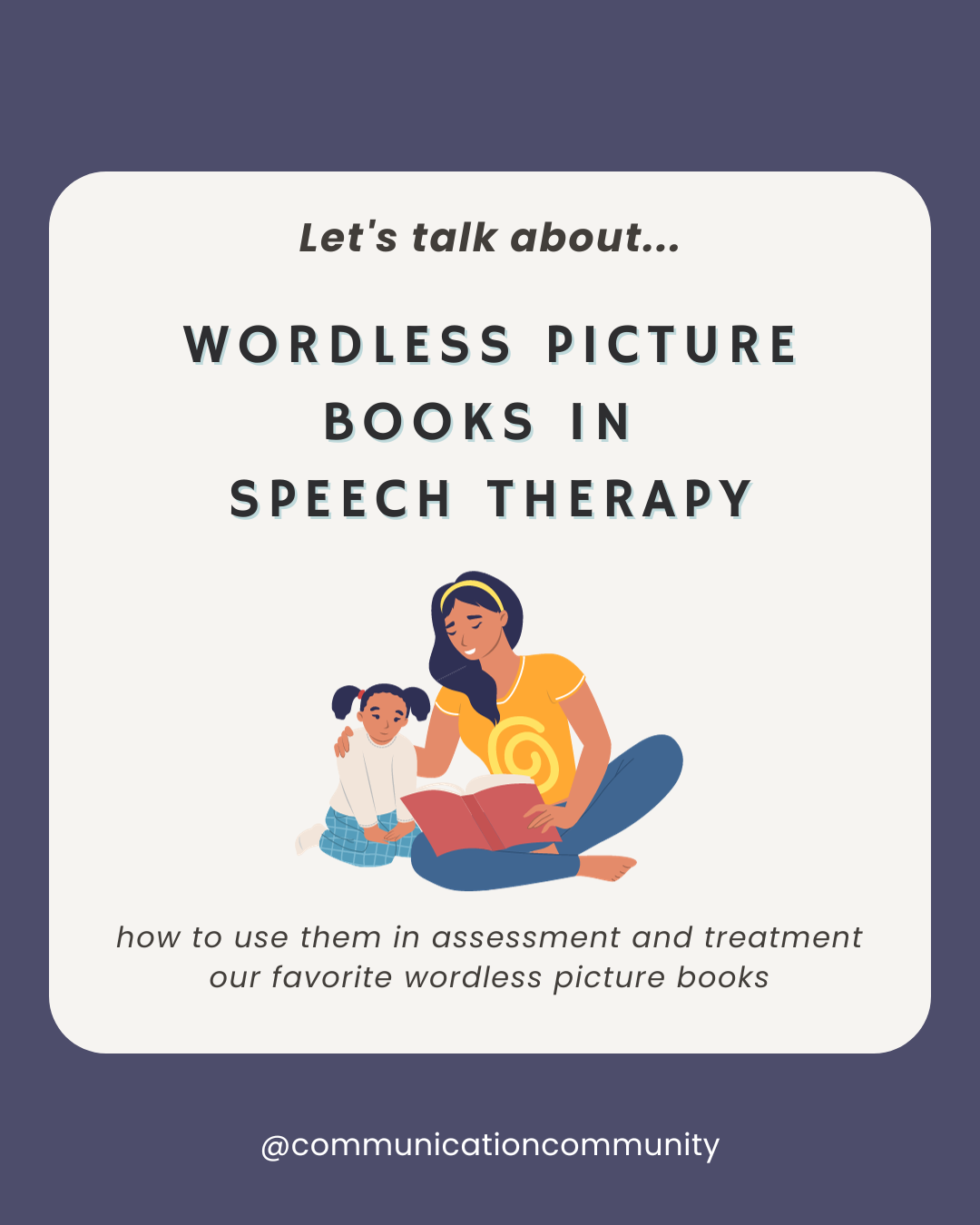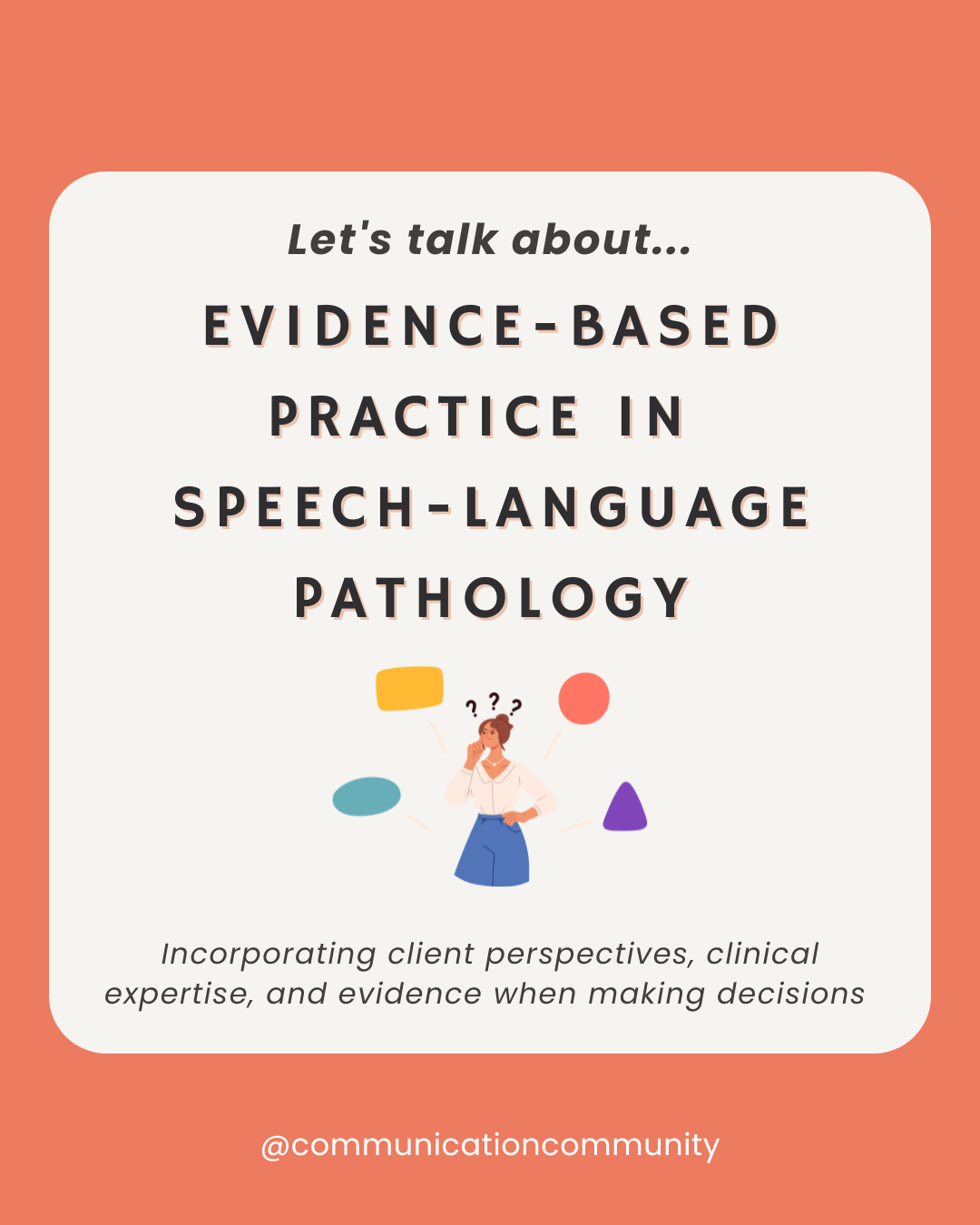
Self-Advocacy and Speech Therapy
Self-advocacy skills involve effectively communicating one's needs and desires. This can be incorporated into speech therapy and transition planning. Self-advocacy resources are also available within post!
Check out our latest blog posts here! We hope you enjoy.


Self-advocacy skills involve effectively communicating one's needs and desires. This can be incorporated into speech therapy and transition planning. Self-advocacy resources are also available within post!

Fillable progress report form/template for speech therapists (SLPs), clinicians, and educators. This progress report template is suitable for documenting goal progress/performance related to school IEPs and treatment plans in other clinical settings

Speech therapy assessments are usually comprised of formal testing and informal testing. Formal testing may include tools such as standardized assessments, while informal testing may include caregiver/client interviews and usually use methods that are more flexible and adaptable.

Activities for stuttering therapy can include open-ended questions, games, reading tasks, and more! Read about how we structure sessions with individuals of all ages.

Wordless picture books can support language development by facilitating opportunities for sentence expansion, vocabulary use, and making inferences. Speech-language pathologists (SLPs) often use these educational tools in treatment sessions and as part of evaluations.
![How to Write Neurodiversity-Affirming Speech Therapy Goals [with goal bank]](https://www.communicationcommunity.com/content/images/2023/12/How-to-Write-ND-Goals---ghost-cover.png)
Neurodiversity-affirming speech goals should include language and communication strategies that respect and acknowledge the diverse ways in which people think, learn, and communicate. This article discusses considerations when writing goals and includes complete goal examples.

Evidence-based practice in speech-language pathology is vital for effective practice. It involves three main parts: client perspectives, clinical expertise, and evidence (internal and external). In this article, we will dive into each of these areas.
